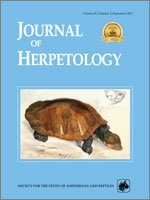An external fundamental system (EFS) is a form of bone microstructure present in the outermost cortex of long bones in animals that have attained skeletal maturity. It indicates an effective cessation of any significant periosteal growth (i.e., growth in circumference or girth). Although an EFS has been noted in several reptile taxa, the idea that reptiles grow continually throughout their lives remains popular. Examination of femoral bone microstructure from captive American Alligators (Alligator mississippiensis) reveals parallel-fibered tissue terminating periosteally in an EFS, thus confirming determinate growth in another reptile taxon. The results of this study have several important implications for both modern and fossil tetrapods: first, because many birds, nonavian dinosaurs, pterosaurs, and basal pseudosuchians all produce an EFS, it can be concluded that determinate growth is a shared characteristic of Archosauria; second, because the captive alligators were not senescent, an EFS should not be associated with “old age” when interpreting growth histories of extinct animals; third, if no EFS is present, this should not immediately suggest indeterminate growth but rather that skeletal maturity was not attained prior to death. In addition, this study highlights the need for more osteohistological studies to establish exactly how widespread determinate growth is within both extinct and extant members of Sauropsida, because this form of growth may be the rule rather than the exception.
How to translate text using browser tools
1 September 2011
Osteohistological Evidence for Determinate Growth in the American Alligator
Holly N. Woodward,
John R. Horner,
James O. Farlow
ACCESS THE FULL ARTICLE

Journal of Herpetology
Vol. 45 • No. 3
September 2011
Vol. 45 • No. 3
September 2011




